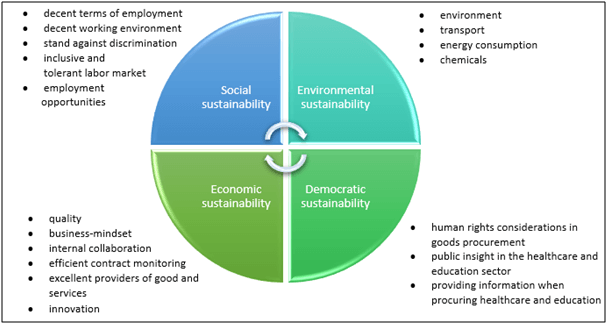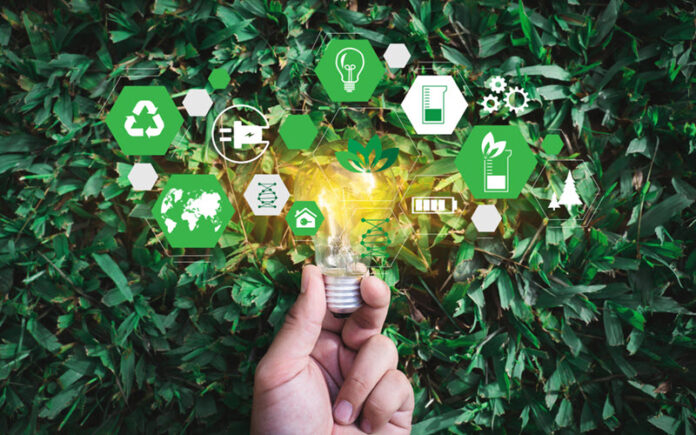Sustainability is one of the most important trends of our time that is set to dominate business discussions and decisions making for a long-term basis. From this point of view, a new competitive tool called sustainability emerged. It merges with important factors such as quality, cost, reliability, just in time, with flexibility and innovation for building competitive businesses. For all business organizations in the public and private sectors worldwide, the acceptance of sustainability takes time as it depends on their willingness.
Table of Contents
Understanding the Principles of Sustainability
As we enter a new era, it is vitally important that procurement leaders understand what sustainable procurement means for both the public and private sectors. Companies can shift their methods of procurement to ensure that they are operating profitably. Sustainable procurement processes are to determine the outcome effects of procurement action in terms of good benefits for both environmentally and socially. It incorporates additional stages of monitoring and assessment. Hence, new sustainable methods are carefully inbuilt into various stages of the procurement process.

Factors for Sustainability Issues
Several macro factors are leaning companies towards sustainable procurement. Some of these factors include the following:
- Health of our ecosystems.
We need to protect the earth natural resources like water, air and land from pollution for the sake of future economic and social needs.
- Sustainable decision making.
Companies that are involved in making their economic decisions should plan for their future generations and not considering for current situation. For example, if present pollution continues to rise at an exorbitant rate. Thus, it poses a great danger to our future generations.
- Renewable resources.
To research into natural energy sources like solar and wind power so that we do not need to rely on non-renewable resources.
- To stop global warming.
We need to plan carefully for policies that will not worsen the current planet condition such as preventing water shortages, extreme weather events and excess temperature for future generations. These factors could make living in all parts of the world very tough or not possible at all.
- To protect species from extinction and ecological destruction.
Since medicines require natural elements within a specific plant species. Thus, it is of great importance to protect all creatures and water species from extinction.
- Our natural resources are very valuable too.
We must not just rely only on monetary value but also on our natural resources like land which has bountiful rain forests and oceans which inhibit all sea creatures.
Planning Considerations for Sustainability
An organization with sustainable procurement needs to be decisive and plan on how to collaborate with suppliers on critical sustainable issues. It also needs to have carefully planned strategies for the sustainable procurement team to act based on daily events or circumstances. Like meetings with suppliers regularly with constant updating on matters relating to sustainability issues. At the same time by educating them, monitoring their performances and building suppliers’ relationship and gaining trust. This is also to minimise misunderstandings or conflicts. It is important for an organisation to governance fairly in relating to the suppliers, consumers, surrounding environment and the community on sustainability issues. Practically such an organisation involvement shows its responsibility towards everyone with their fair sustainable practice, goof decisions making and well-organized activities.

Managing Risks in Sustainable Procurement
Managing sustainable procurement risks can be extremely challenging. Procurements need to achieve full supply chain visibility and get first-hand information on compliance risks or supplier distress. In the global supply chain, it is important to minimise any deficiency in supplier monitoring, assessment and then identification. Moreover, the size and complexity of these supply chains make it very difficult for organizations to target their audit, risk management and supplier development resources effectively.
The full content is only visible to SIPMM members
Already a member? Please Login to continue reading.
References
American Society for Quality. (2020). “ISO 14001 in Sustainable Procurement” Retrieved from https://asq.org/quality-resources/iso-14001, accessed 15/09/2020.
Environmental Protection Department, HK. (2020). “Sustainability Concepts of Green Procurement”. Retrieved from https://www.epd.gov.hk/epd/english/how_help/green_procure/green_procure.html, accessed 15/09/2020.
Mickie FoongMee Keat, PDPM. (2019).“Key Considerations for Sustainable Procurement”. Retrieved from SIPMM: https://publication.sipmm.edu.sg/key-considerations-sustainable-procurement,accessed 18/09/2020.
RMIT. (2017). “The Four Pillars of Sustainability”. Retrieved from https://www.futurelearn.com/courses/sustainable-business/0/steps/78337, accessed 19/09/2020.
Wee Poh Ling, DPSM. (2020). “Sustainable Procurement for Green Building”. Retrieved from SIPMM: https://publication.sipmm.edu.sg/sustainable-procurement-for-green-building, accessed 18/09/2020.

